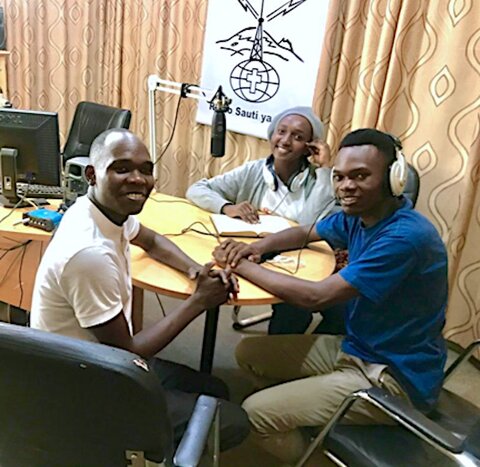ACACIA & Community Engagement

Author: Gioia Mosler (Programme and Research Manager for ACACIA and CAPPA studies, responsible for Community Engagement and Involvement)
07/06/2023
Why did we want to involve and engage with the community?
Our seven African teams worked with partnering schools, groups of adolescents, parents, and teachers, as well as the wider communities from the very beginning of the project. Our initial aim was to understand the context of our research about asthma in adolescents, and to start a conversation about societal barriers to good asthma control in adolescents. We soon realised that there often was limited understanding about asthma, and that many adolescents with asthma faced stigma. We noticed that myths about asthma and its treatment were common. Treatment recommendations in Zimbabwe for example included a chameleon walking over flour, and inhaling marijuana smoke. Our In Control theatre and workshop about attitudes to asthma targeted stigma and understanding of asthma in our study schools through over 100 performances.
Targeting and organising engagement activities
There was an urgent need to tackle stigma, myths and misapprehensions about asthma in the wider context at each of our sites. It was also clear that each site required a unique approach to educate about asthma within their cultural context. We established a community engagement lead at each site, and I developed a community engagement strategy for the project (https://www.nihr.ac.uk/blog/untrodden-paths-developing-a-public-engageme...). Each site developed relevant ideas how to reach community groups and events. Activities included talks at school open days (Nigeria), a stall at the Harare Agricultural Group (Zimbabwe), and Q&A sessions for church congregations (Ghana).
Using media to reach a wider audience
Sites were also very successful in educating a wide audience about asthma through over 50 media engagements, especially through radio, a main source of information in low-income households in Africa. Some broadcasts were in local languages, making them accessible to those knowing little English. Our teams also appeared on national TV talk shows, and health programmes. Some teams communicated through social media, for example collaborating with Science Spaza social media handles in South Africa. During COVID our medically trained teams also educated and answered questions on pandemic-related lung health.
Recognising the need to address an additional audience
During focus group discussions it was recognised that adolescents with asthma symptoms and their parents often had difficulties to get a diagnosis when interacting with the health care system. As such, some sites engaged with health care professionals about asthma. In Zimbabwe the team ran a workshop with City of Harare nurses about clinical presentation of asthma and management, followed by a WhatsApp group where clinical case scenarios are discussed. In Nigeria the team organised specialist asthma training for 100 GPs.
Engaging about air pollution during our extension study
For our extension study about air pollution we discussed knowledge about air quality and its connection to health with school students, parents, and teachers. Awareness about air pollution was generally low, and we therefore developed an interactive education workshop with Centre of the Cell, a UK science centre, which were conducted in partner schools across sub-Saharan Africa to raise awareness of air pollution and asthma, its effects, and to address misinformation. In Nigeria the team also provided educational workshops at clinics. In Tanzania, discussions with the community on air pollution brought the idea of reducing loose dust exposure from playground surfaces using watering techniques and planting grass around schools.
What impact did our community engagement have?
ACACIA impacted communities via well over 100 activities, including: science fairs, talks, workshops, webinars, and radio and TV appearances, through which they educated and engaged people about asthma and air pollution. Audiences expanded from adolescents and parents, to other important society groups, such as natural healers and nurses, to the general public. Over 4000 adolescents across five countries partook in our theatre and workshop where they learned about attitudes to asthma. Community engagement activities also supported stakeholder engagement, such as building and maintaining school networks, and establishing links to Ministries of Health and Education.